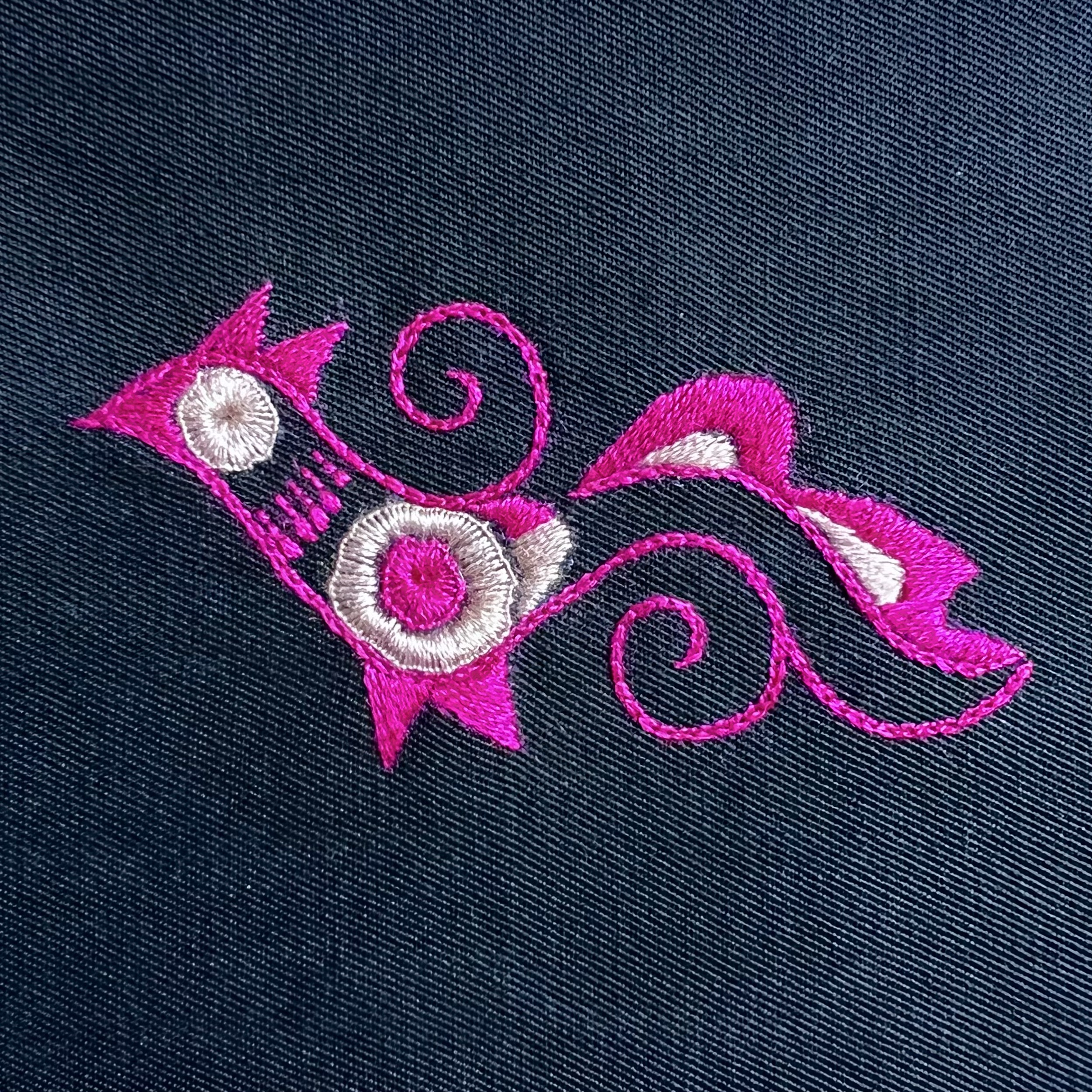
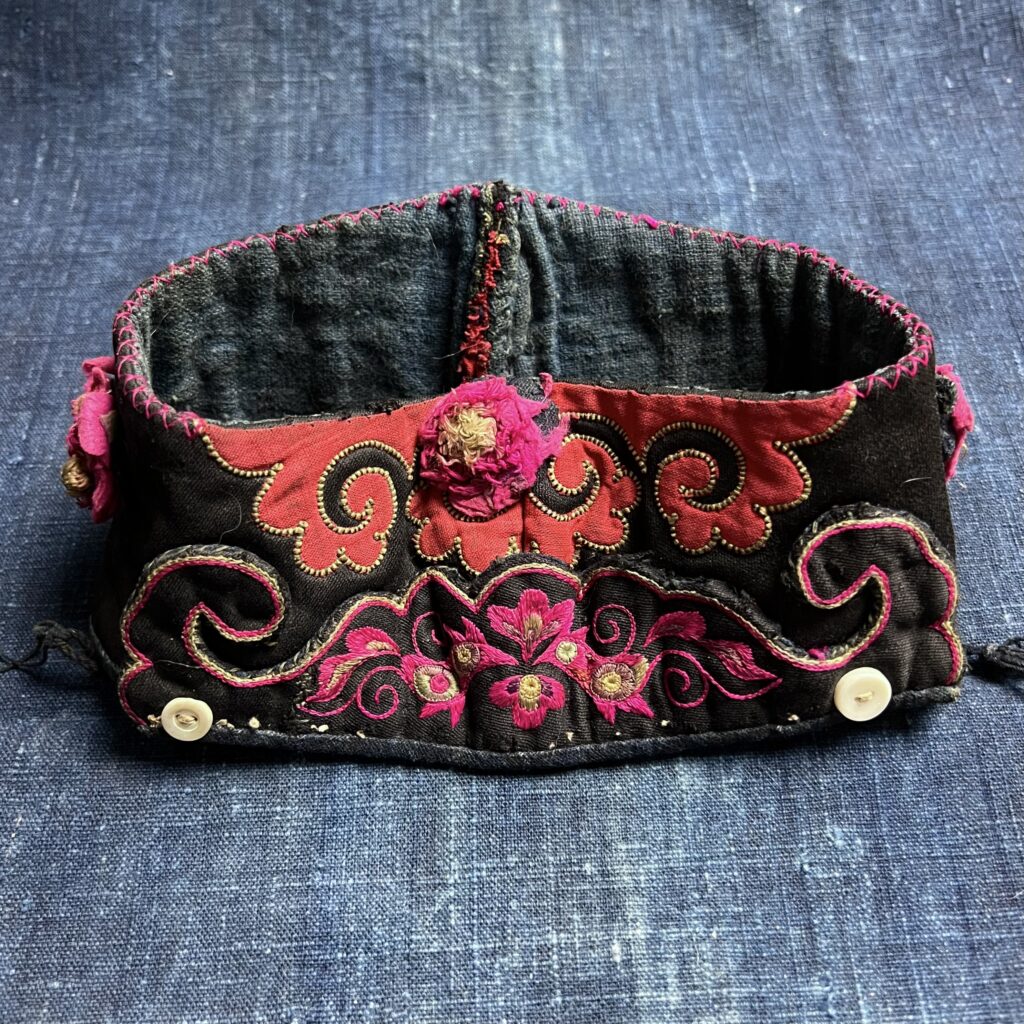
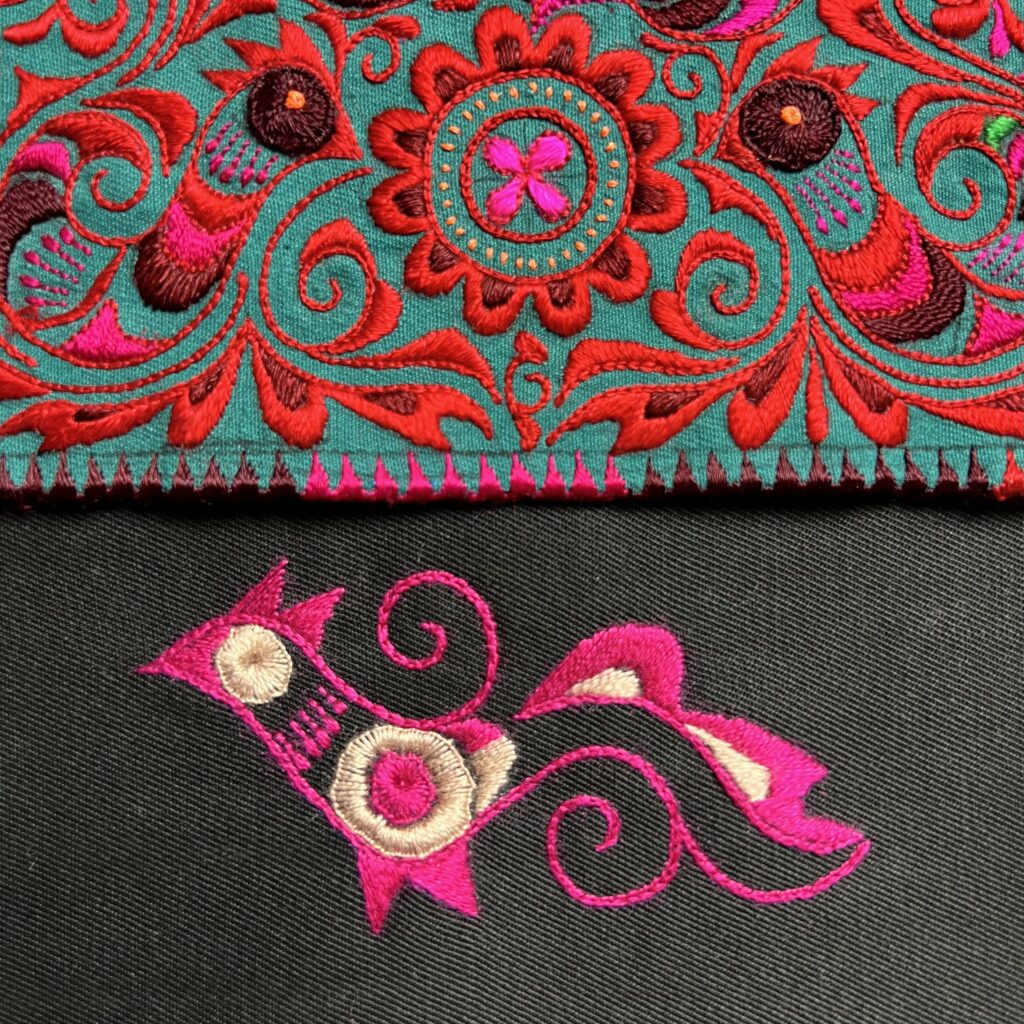
The Raojia people are an ethnic minority group with a population of less than 10,000 living deep in the mountains of Guizhou, Southwest China. In 1992, the Raojia were recognized by the Chinese government as a clan of the Yao, one of China’s 56 ethnic groups. Before then, Raojia recieved little attention from the outside world, due to their “unrecognized ethnic group” status. Since 1992, the Raojia people have maintained the attention of collectors internationally with their brilliant textile traditions, from maple resin resist batik to embroideries and appliqués.
Traditionally, Raojia women make their own textiles, beginning with the growing and processing of the cotton that they use. Their traditional costumes include 6 piece jackets, which can take years to complete. They sharpen bamboo sticks with sickles to draw intricate batik designs. Whenever they part with their textile work, Raojia women always cut out a small piece of cloth to ensure that their needlework skills will be passed down to the next generation.
In this class, Selina Ben will walk students through the brilliant textile heritage of Raojia people. She will talk about Raojia traditional patterns and material culture while presenting images of historical Raojia costumes, bed covers, and baby carriers. Selina will discuss the changes that Raojia embroidery has undergone over time, as well as some Raojia artists’ contemporary practices. Students will learn how to stitch a traditional Raojia bird motif with a chicken crest and a flower petal tail, a design which is often embroidered onto Raojia baby hats for blessings.
A PDF design pattern will be shared one week prior to class for participants to transfer onto their fabric in advance.
Date
Thursday, October 24th, 2024
Time
12 – 2:30 pm ET
Location
Zoom, a link will be sent to participants the day before class
Cost
$65 for the individual class, $350 for the series
*All sessions will be recorded. A link to the recording will be emailed to all those who register following the live session. This link is live for one month after the end of the series for you to watch at your convenience.
A materials kit for this series can be purchased here. Please note that this kit includes most but not all of the class materials suggested by each teacher. Suggested materials for this class can be found below.
Class Materials:
- Base fabric top layer (16x12cm minimum) medium-weight non-stretch cotton twill fabric with high thread count (for example, summer chino fabric), preferably in black or dark blue.
- Base fabric bottom layer (16x12cm minimum): loosely woven non-stretch cotton fabric. Should be heavier than quilt-weight cotton. Selina prefers Azumino-Momen Sashiko fabric. Wash, dry, and iron all fabrics in advance to avoid shrinkage and color bleeding.
- Fusing material: Selina uses Mistyfuse Sheer Fusible Web in White. Separate PDF instructions on how to fuse the fabrics will be shared one week before the class.
- Silk thread: Selina uses Au Ver à Soie Soie d’Alger. Color Pink (1034A) and Dusty Pink (2578A) on sampler.
- Needle: Selina uses John James Quilting Mi-Longues, size 5
- A pair of small, sharp scissors
- A small bowl of water
- Heat erasable fabric marker in white
- Iron
- Carbon paper for transferring design pattern to fabric (1pc): Olympus carbon paper. Use blue for light colored fabrics and white for dark colored fabrics. Alternatives: using light box and fabric markers to transfer the design pattern.
- Parchment paper
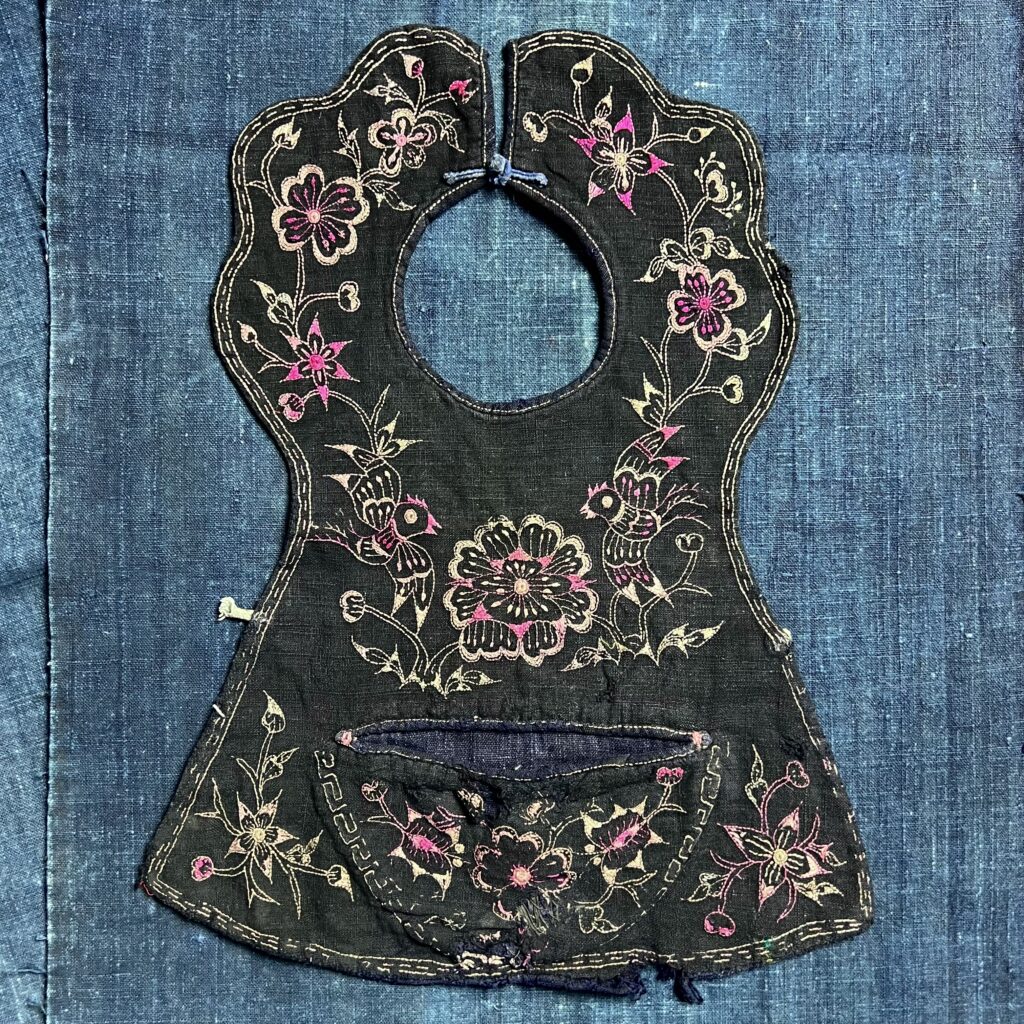
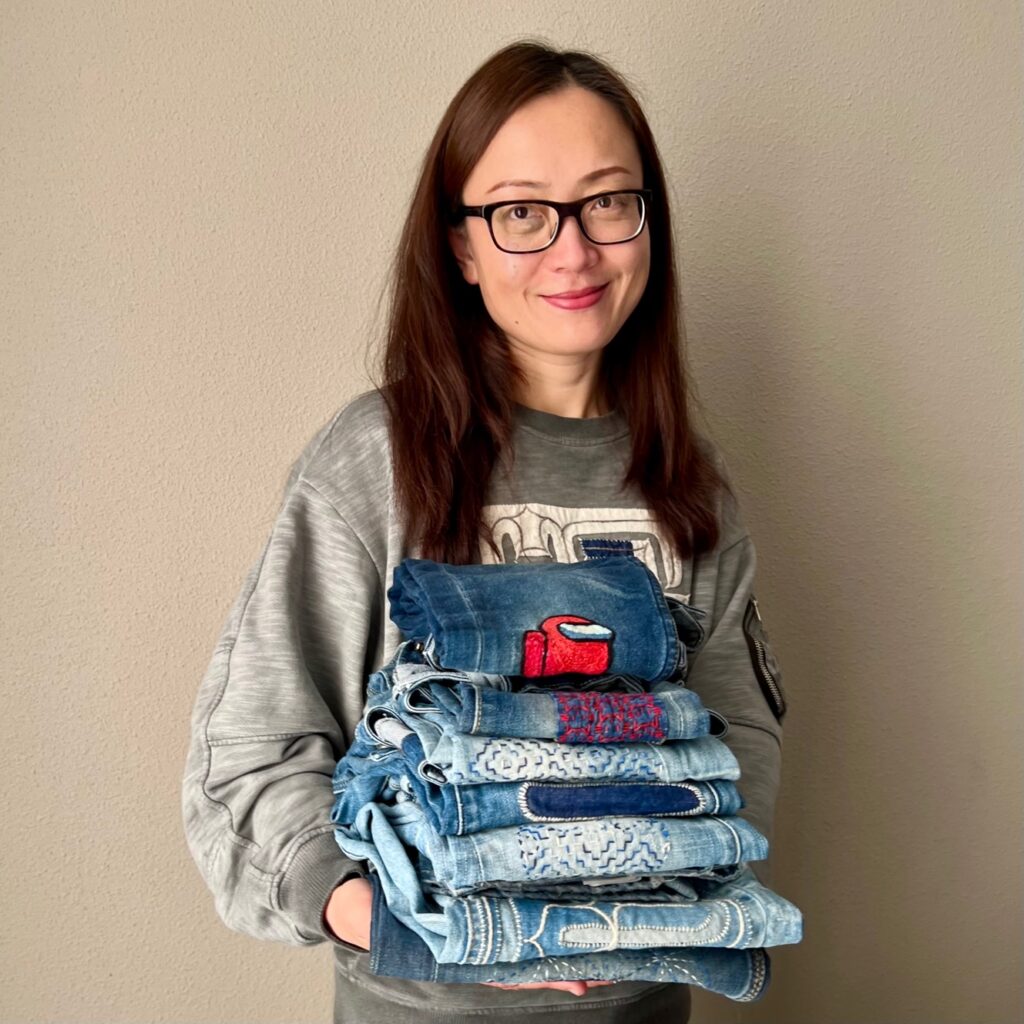
Our Teacher
Selina Ben is a textile artist and mender based in Amsterdam, the Netherlands. With a professional background in textile product development, her passion for textiles has existed for as long as she can remember.
Selina is inspired by historical textiles around the world. Her curiosity about why the textiles were significant to a place, what materials were used, and how they were made stimulates her creativity. With her practice, she hopes to preserve disappearing techniques and to honor unknown makers and their cultural heritages.
Witnessing landfills overloaded with textile waste, Selina chooses to work with pre-used fabrics. All the signs of wear and tear on the fabrics are a source of inspiration for her creative process. With her hands, needles and threads, Selina brings the fabrics to a new phase of their lives so that people can start looking at our relationships with textiles differently.
Selina believes stitching by hand is the best form of meditation. The repetitive motions of arms, wrists, fingers, needle and thread bring peace of mind and a sense of accomplishment. As time goes by, the grounded feeling arises, the positive energy grows and a new work is born.
Selina’s practice can be found at www.unwrittenstitch.com and Instagram @selinaam05.
